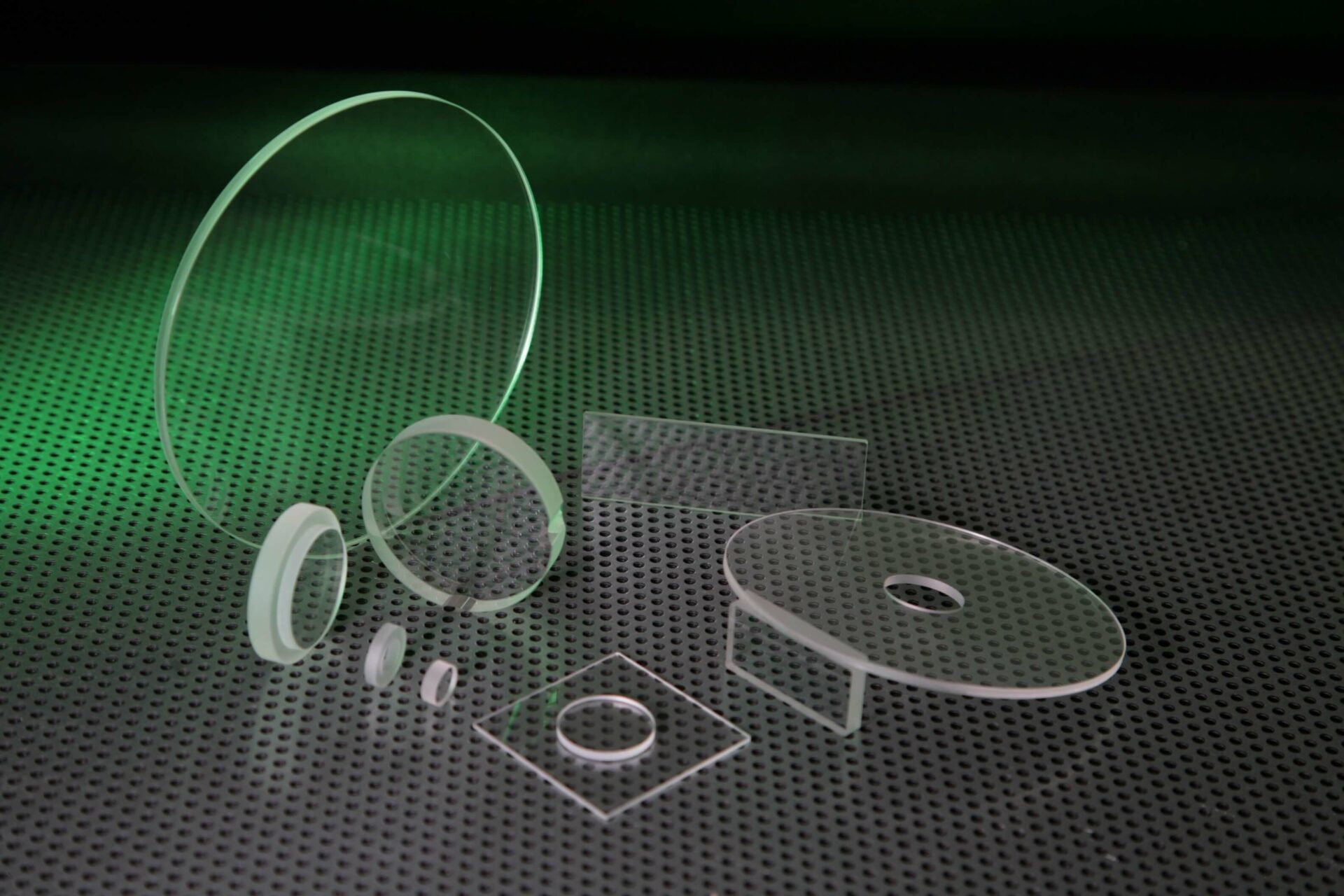Optical Windows are flat optical components that are designed to transmit light according to the wavelength range required by a specific application. They protect sensitive equipment and can produce a range of optical effects with additional optical coatings.
In this first of our two articles on these widely used optical components, we look at the key properties of Optical Windows as well as their use in a huge range of scientific, medical, defence and industrial sectors and applications.
We also run through some of our most popular optical windows including Germanium Windows and Sapphire Windows and their respective options, applications and properties.
Key properties of Optical Windows
Optical Window specifications may be based on a range of material properties and criteria including:
- Material transmission
- Refractive index
- Substrate hardness
- Scattering or diffusion requirements
- Environmental durability and resistance.
Their use should not impact on magnification of a system.
Optical Windows can be optically polished. Surfaces can be coated with AR coatings for maximum transmission performance across a particular wavelength from the UV to IR.
What are Optical Windows used for?
Optical Windows are used by scientific and industrial companies across the world of medical, defence, instrumentation, laser, research and imaging.
Substrate options
Depending on the requirements specified, optical windows can be made in a range of materials:
- Barium Fluoride (BaF2)
- Borosilicate Glass
- Calcium Fluoride (CaF2)
- Float Glass
- Fused Quartz
- Germanium (Ge)
- Lead Glass
- Magnesium Fluoride (MgF2)
- Optical glass
- Sapphire
- Silicon (Si)
- UV Fused Silica
- Zinc Sulphide (ZnS)
- Zinc Selenide (ZnSe)
Popular Optical Windows from UQG Optics
UQG Optical Windows products include wedges, substrates, discs, flats, plates, rods, protection windows, laser windows, camera windows, light guides and domes.
All our Optical Windows are available from a standard range stock, while custom sizes and specifications can be custom-made to your specific design.
We stock a wide range of optical windows. Here we look at some of the most popular:
- Thin AR Coated Windows, Plates and Sheets
- BK7 Windows
- Fused Silica Windows and Plates
- Germanium Windows
- Optical Diffusers
- Sapphire Windows and Plates
- Silicon Windows
AR Coated Thin Glass Windows, Plates and Sheets
AR coating of windows, glass plates and substrates reduces glare and reflection, thereby increasing transmission and brightness. AR coatings are used widely used in LCD modules, display panels and medical devices and can be applied in a range of custom thicknesses to 0.10mm thick. Coating layers can be applied to both sides of the optical window substrate for the visible wavelength or to a single side for the near IR.
BK7 Windows
BK7 windows are made from high quality borosilicate-crown glass material for applications and instrumentation in the medical, scientific and industrial sectors. BK7 windows are supplied as diameters, squares and rectangles from standard stock range or to custom specifications and provide excellent transmission in the visible and near IR areas of the spectrum. AR coatings can be applied for increased transmission.
Fused Silica Windows and Plates
Fused silica is an extremely pure material with a very fine, low scatter surface quality which is ideal for optical windows. Fused silica windows are widely used in high-energy applications such as imaging and laser systems where microscopic defects could potentially lead to damage due to distortion, autofluorescence or scattering. AR coatings can be applied for UV, visible or IR applications.
Germanium Windows
Germanium windows and lenses are used widely in thermal imaging systems, defence and aerospace industries, life and medical sciences, optics for industrial OEMs and many other infrared applications. They have excellent transmission across 2-14 µm waveband and can be used in both mid-wave infrared (IR) and long wave IR systems. Transmission reduces as the temperature of the window increases. Germanium windows can be supplied uncoated, AR both sides coated and AR/DLC coated in a range of sizes.
Fused Quartz Windows & Plates
Fused quartz windows are used in lamps, instruments, viewports and other sensitive equipment where protection from harsh environmental extremes is required. This is because fused quartz is very hard, has high temperature stability to 1050°C and is resistant to thermal shock. Fused quartz windows offer transmission ranges from 260nm to over 2 microns, multiple grade options from commercial to precision and custom options including surface flatness, coatings, shapes and dimensions make them a cost-effective choice for industrial and optical applications.
Optical Diffusers
Optical diffusers are used to alter the divergence of incident light in imaging techniques and for illumination control in optical sensing and military instrumentation. They can be supplied in several options: unmounted, mounted and AR coated on N-BK7 substrates and unmounted on a UV fused silica substrate.
Sapphire Windows & Plates
Sapphire windows and plates are extremely hard and scratch resistant. Sapphire as a material has excellent thermal conduction and heat radiation properties and is resistant to common chemical acids. Manufactured in a range of sizes and thicknesses, sapphire windows can withstand high pressures and are suited for applications in harsh environments for (UV) ultraviolet, (VIS) visible and (IR) infrared transmission.
Silicon Windows
Silicon windows from UQG Optics are made from 99.9% pure silicon. Silicon has a transmission range of 1.2-8 microns (uncoated) but for 9 microns it has a strong absorption band good for use at 3-5 microns. Silicon windows have low density making them ideal for use in delicate and weight-sensitive optical instruments requiring hard surfaces in the military, imaging and scientific sectors. AR coatings can be applied to silicon windows.
Next Steps
To find out more about Optical Windows from UQG Optics, or any of our other optics contact us on 01223 420329 or email our sales team at info@uqgoptics.com




